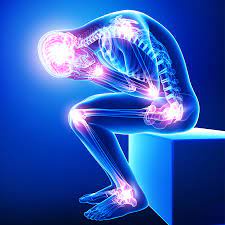First of all,
Pain and post-traumatic stress disorder (PTSD) are two complex conditions that often coexist, creating significant challenges for individuals affected. The intersection of pain and PTSD can exacerbate symptoms, diminish quality of life, and hinder recovery efforts. Understanding the relationship between these conditions is crucial for effective treatment and management strategies. This article delves into the intricate connection between pain and PTSD, explores contributing factors, and discusses approaches to address these co-occurring conditions.
Understanding Pain and PTSD:
Pain is a multifaceted sensory and emotional experience that can result from physical injury, illness, or psychological trauma. It encompasses a wide range of sensations, from mild discomfort to severe agony, and can manifest as acute or chronic. Chronic pain persists beyond the expected time for healing and is often associated with conditions such as arthritis, fibromyalgia, or nerve damage.
PTSD, on the other hand, is a psychiatric disorder that develops in response to experiencing or witnessing a traumatic event. Symptoms include intrusive memories, flashbacks, nightmares, avoidance behaviors, hypervigilance, and negative alterations in mood and cognition. Traumatic experiences such as combat exposure, sexual assault, natural disasters, or childhood abuse can trigger PTSD.
The Intersection of Pain and PTSD:
Research indicates a significant overlap between pain and PTSD, with individuals diagnosed with one condition being more likely to experience symptoms of the other. The relationship between pain and PTSD is bidirectional, meaning each condition can exacerbate the severity of the other. For example, chronic pain can increase the risk of developing PTSD following a traumatic event, while PTSD can intensify the perception of pain and prolong its duration.
Several factors contribute to the co-occurrence of pain and PTSD. Shared neurobiological pathways involving neurotransmitters such as serotonin, norepinephrine, and dopamine play a role in modulating both pain and stress responses. Additionally, psychological factors such as fear, anxiety, and catastrophizing can amplify pain perception and exacerbate PTSD symptoms.
Moreover, the impact of trauma on the body and brain can lead to physiological changes that contribute to the development and maintenance of chronic pain conditions. Heightened arousal and hypervigilance associated with PTSD can sensitize the nervous system, leading to increased pain sensitivity and amplification of nociceptive signals.
Addressing Co-occurring Pain and PTSD:
Effectively managing pain and PTSD requires a comprehensive, multidisciplinary approach that addresses both the physical and psychological aspects of these conditions. Integrating evidence-based treatments tailored to the individual's needs is essential for improving outcomes and enhancing quality of life.
Psychoanalysis:
Psychotherapy, particularly cognitive-behavioral therapy (CBT), has demonstrated efficacy in treating both pain and PTSD. CBT techniques such as cognitive restructuring, exposure therapy, and stress management can help individuals develop coping skills, challenge maladaptive beliefs, and reduce symptom severity.
Medications:
Pharmacological interventions aimed at targeting pain and PTSD symptoms may include antidepressants, anticonvulsants, anxiolytics, and alpha-2 adrenergic agonists. Selective serotonin reuptake inhibitors (SSRIs) and serotonin-norepinephrine reuptake inhibitors (SNRIs) are commonly prescribed for managing PTSD symptoms and comorbid depression or anxiety.
Mind-body Interventions:
Mind-body interventions such as mindfulness-based stress reduction (MBSR), yoga, and tai chi have shown promise in reducing pain intensity, improving physical function, and alleviating symptoms of PTSD. These practices emphasize awareness, relaxation, and acceptance, promoting greater resilience and well-being.
Rehabilitation and Physical Therapy:
Physical rehabilitation and therapeutic exercises can help individuals with chronic pain regain strength, flexibility, and mobility while reducing disability and improving overall functioning. Physical therapists can design tailored exercise programs to address specific musculoskeletal issues and enhance physical resilience.
Supportive Services:
Access to social support networks, peer counseling, and support groups can provide validation, empathy, and encouragement for individuals coping with pain and PTSD. Connecting with others who have similar experiences can reduce feelings of isolation and foster a sense of belonging and community.
Comprehensive Methods:
Complementary and alternative therapies such as acupuncture, massage therapy, and aromatherapy may offer additional benefits for managing pain and PTSD symptoms. These holistic approaches focus on restoring balance and harmony within the body, promoting relaxation, and reducing stress.
In summary:
Pain and post-traumatic stress disorder often coexist, presenting complex challenges for individuals seeking relief and recovery. Understanding the interplay between these conditions is crucial for developing effective treatment strategies that address both the physical and psychological aspects of pain and PTSD. By integrating multidisciplinary approaches tailored to the individual's needs, healthcare providers can help mitigate symptoms, improve functioning, and enhance overall quality of life for those affected by these co-occurring conditions.


No comments yet